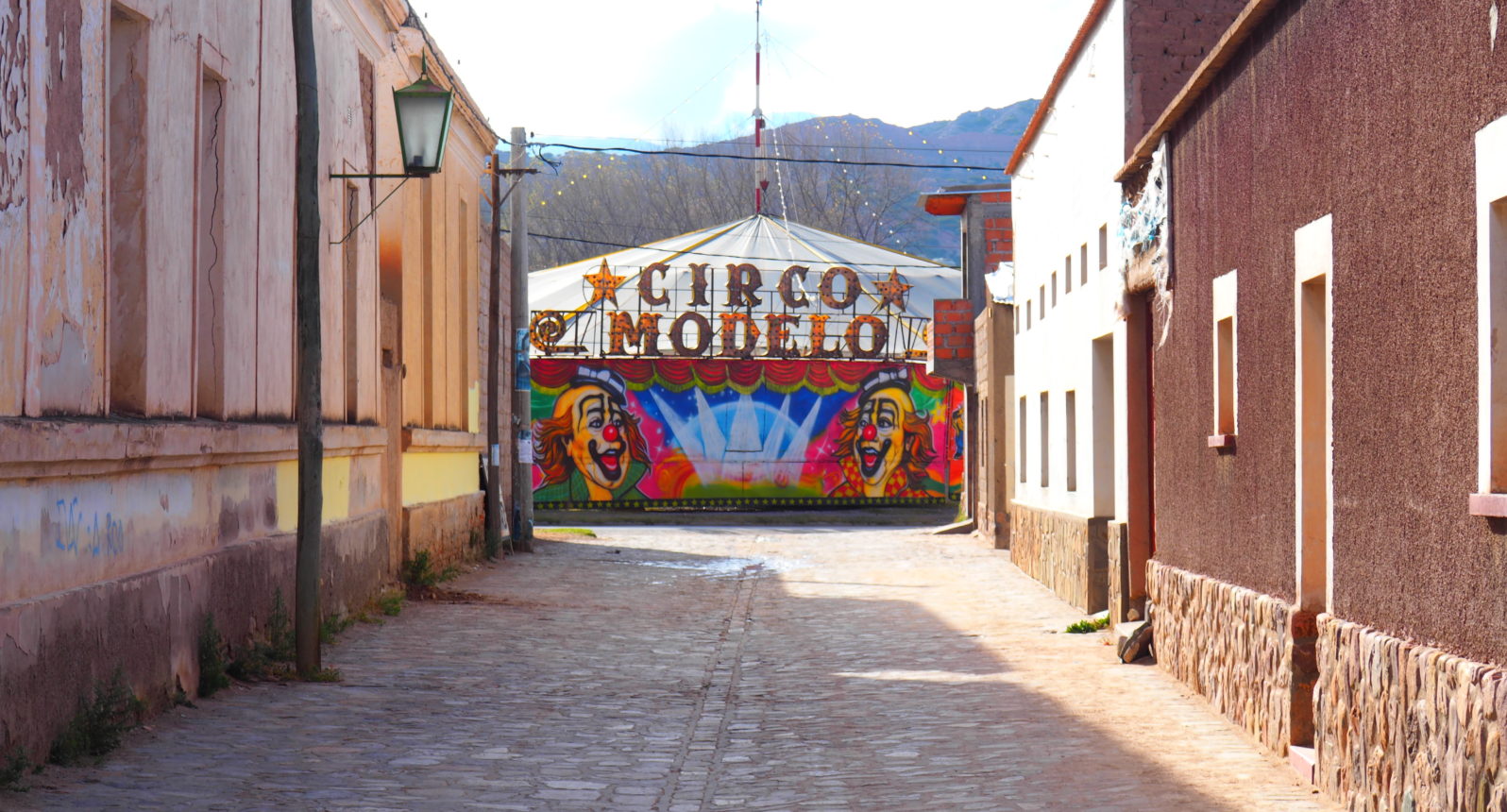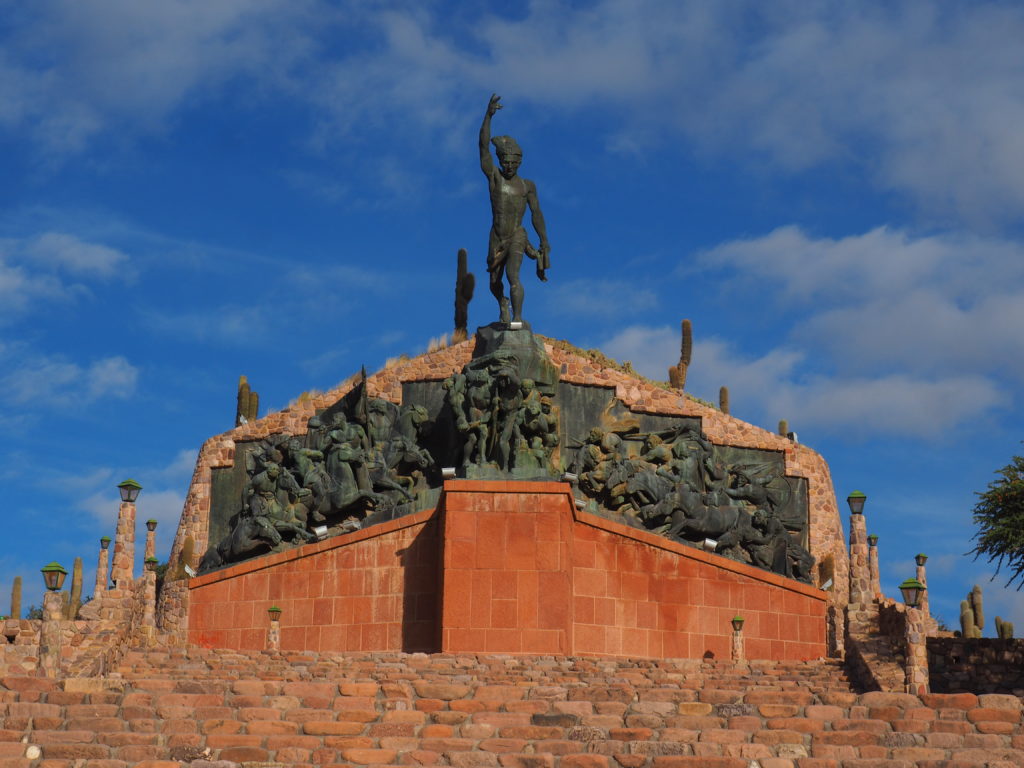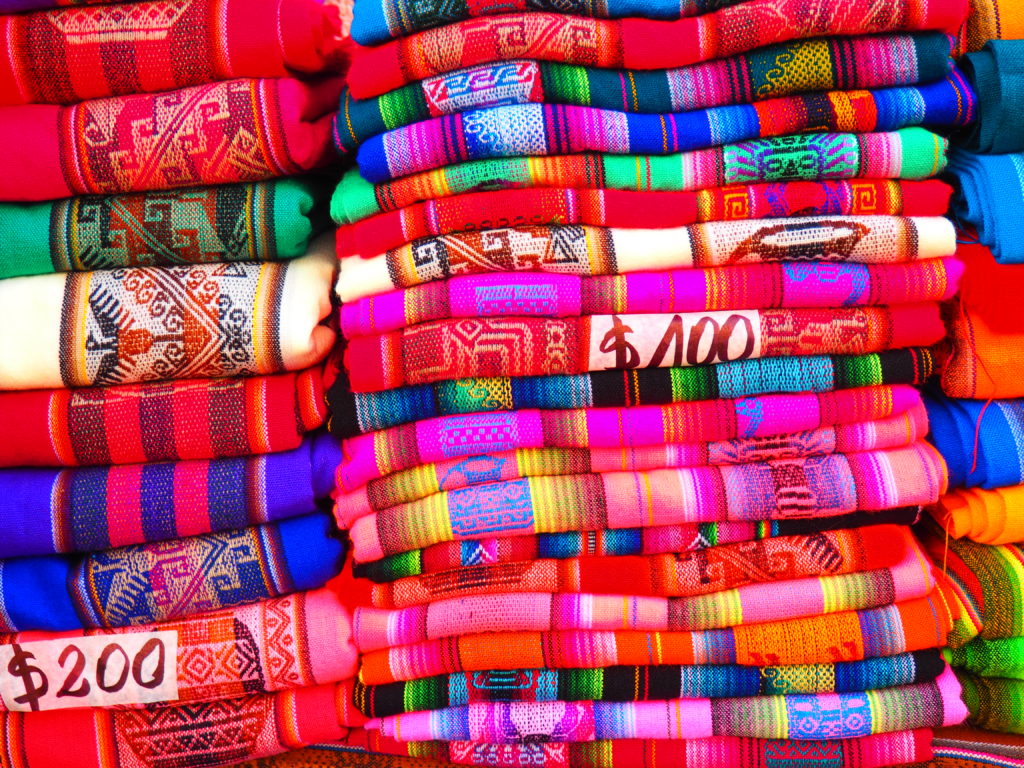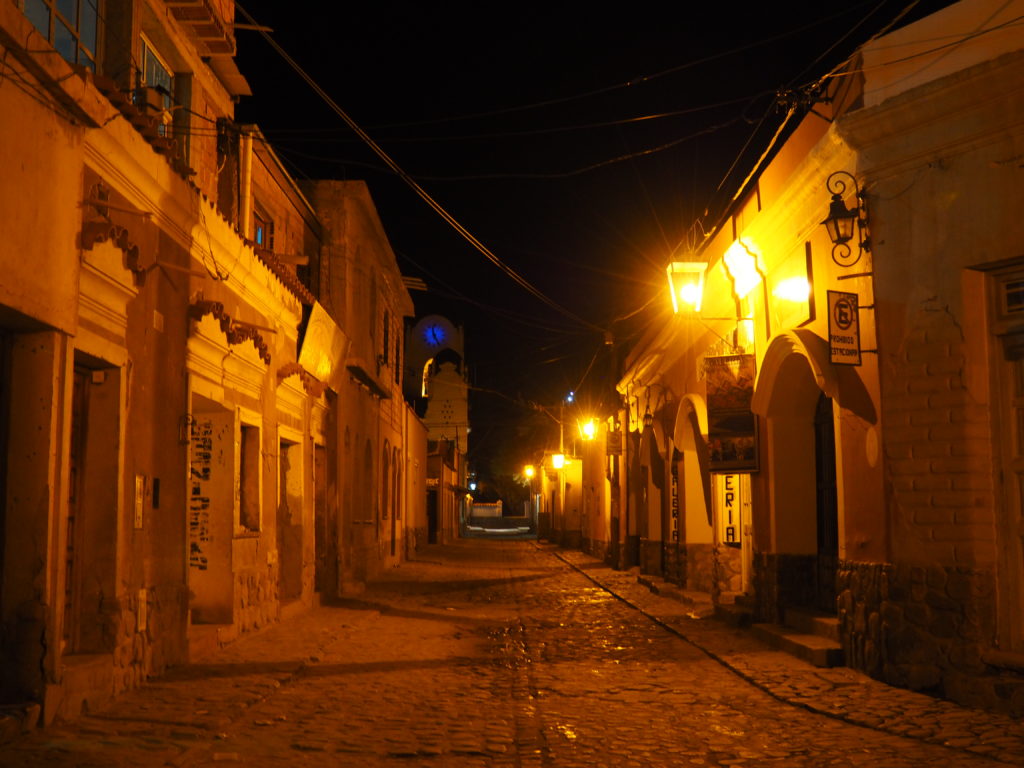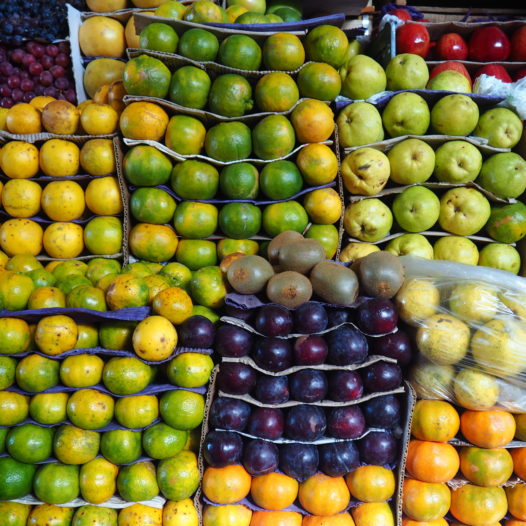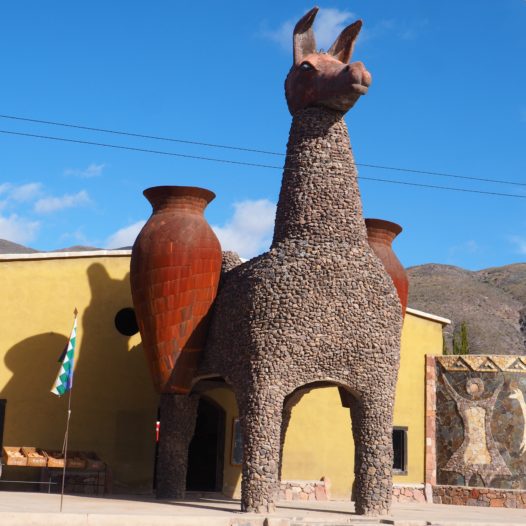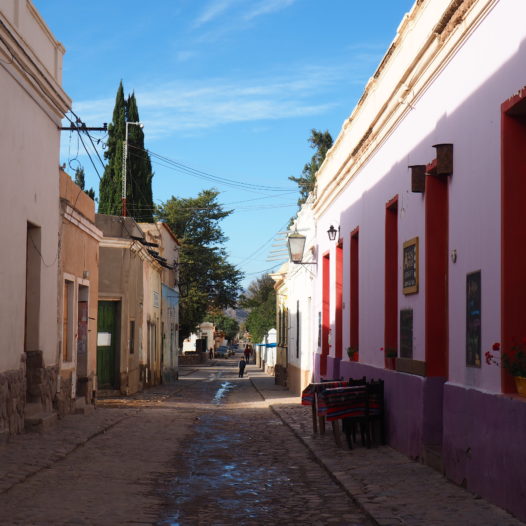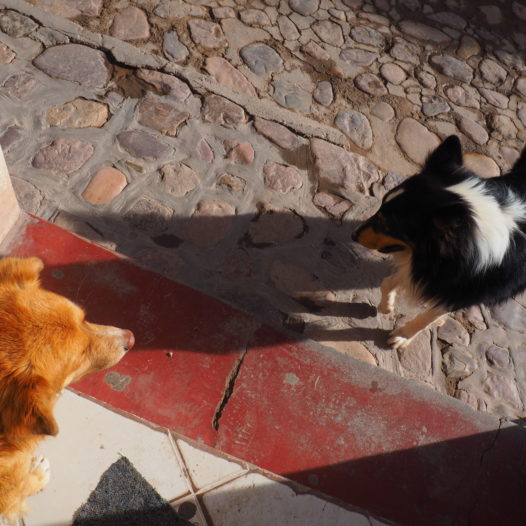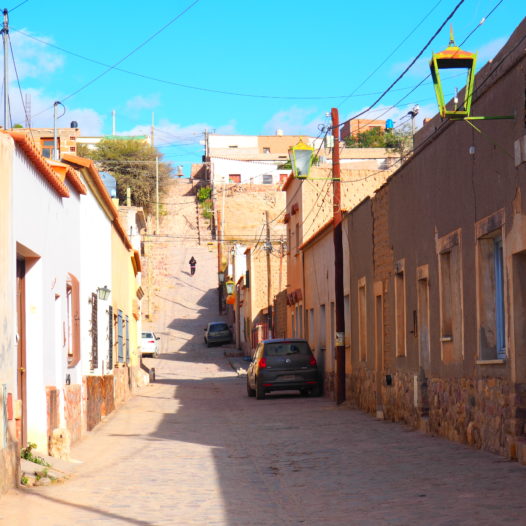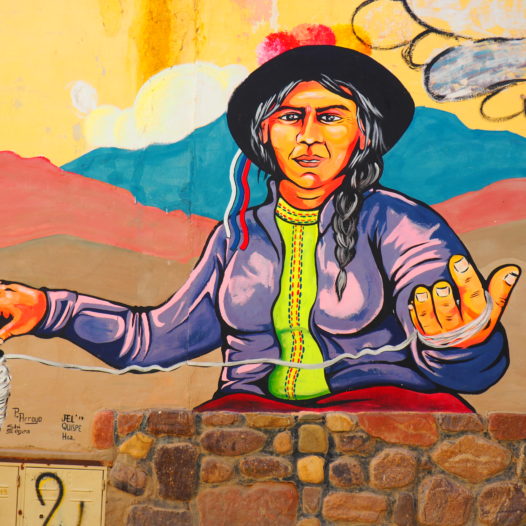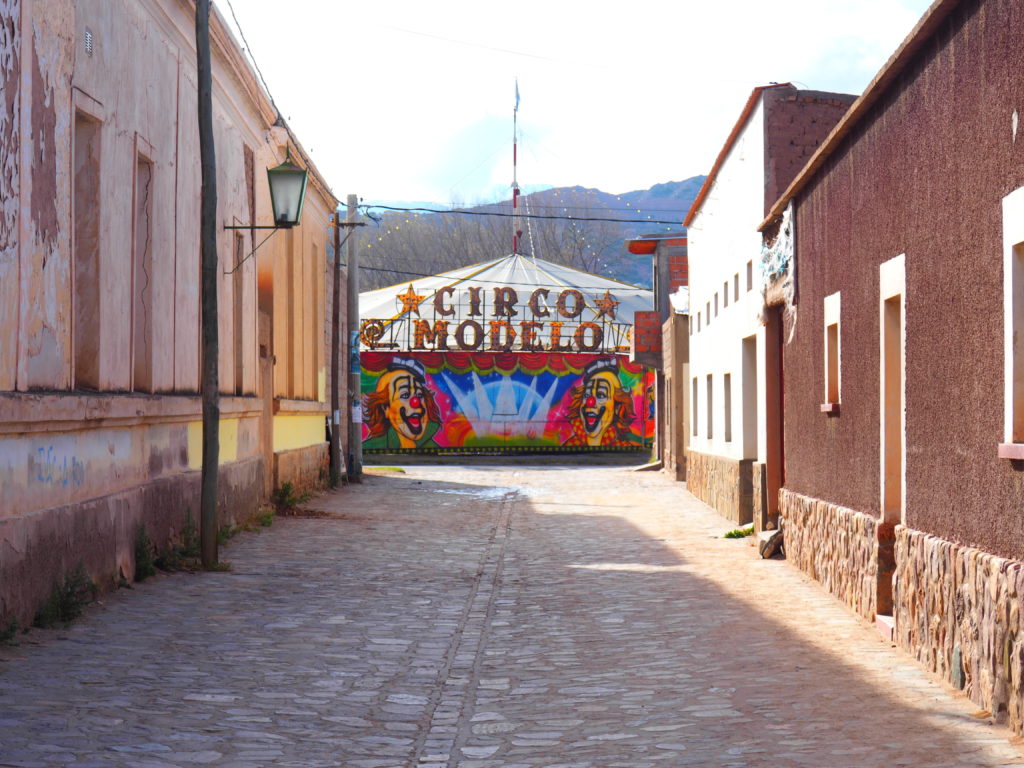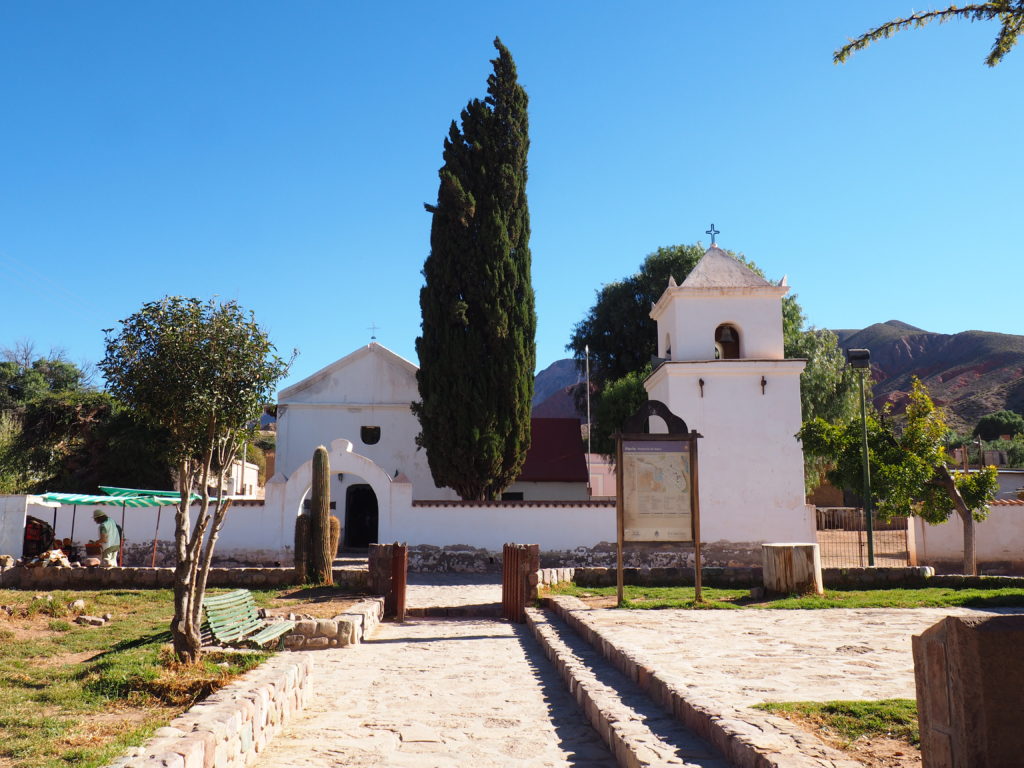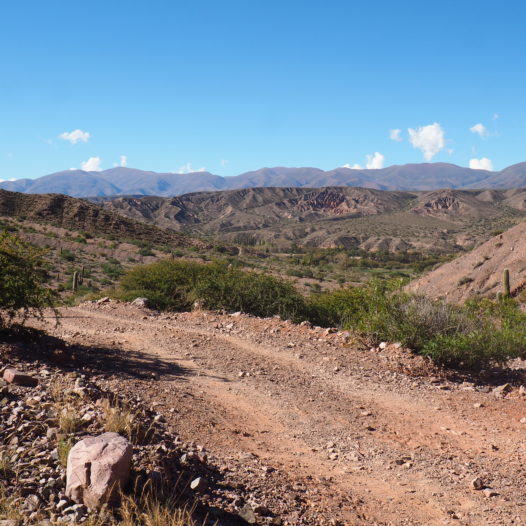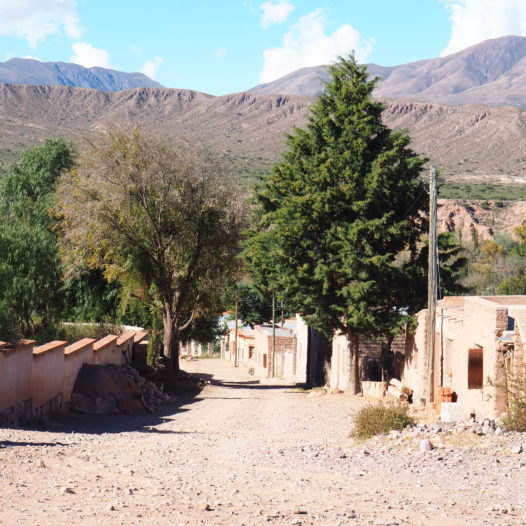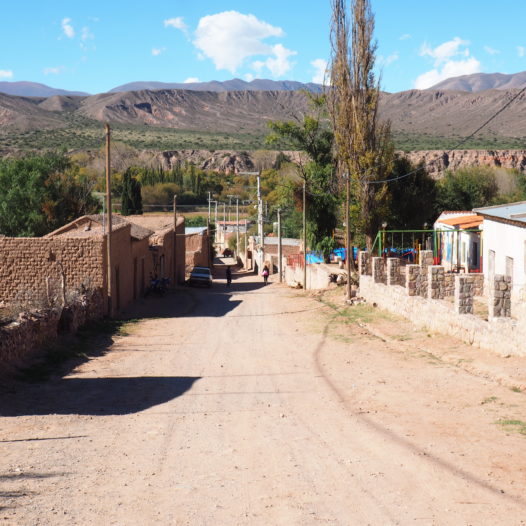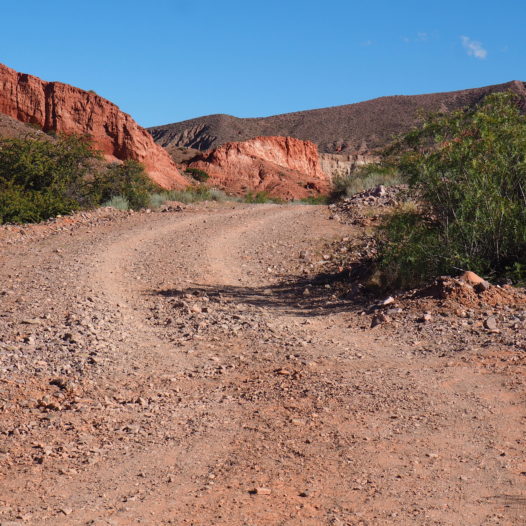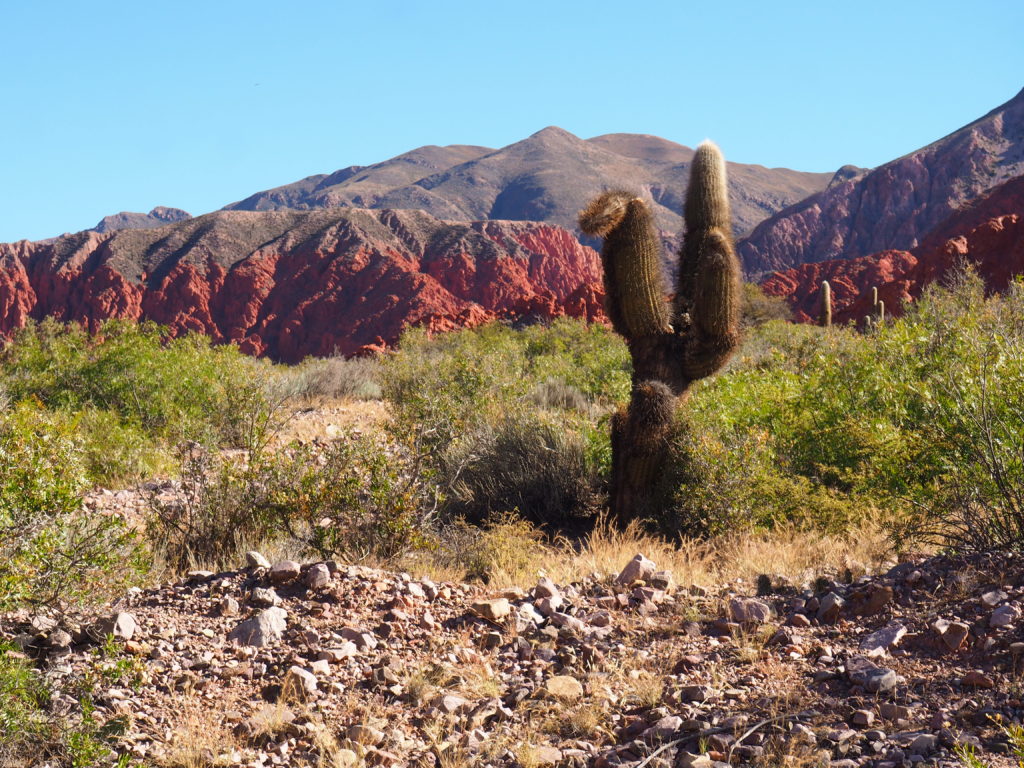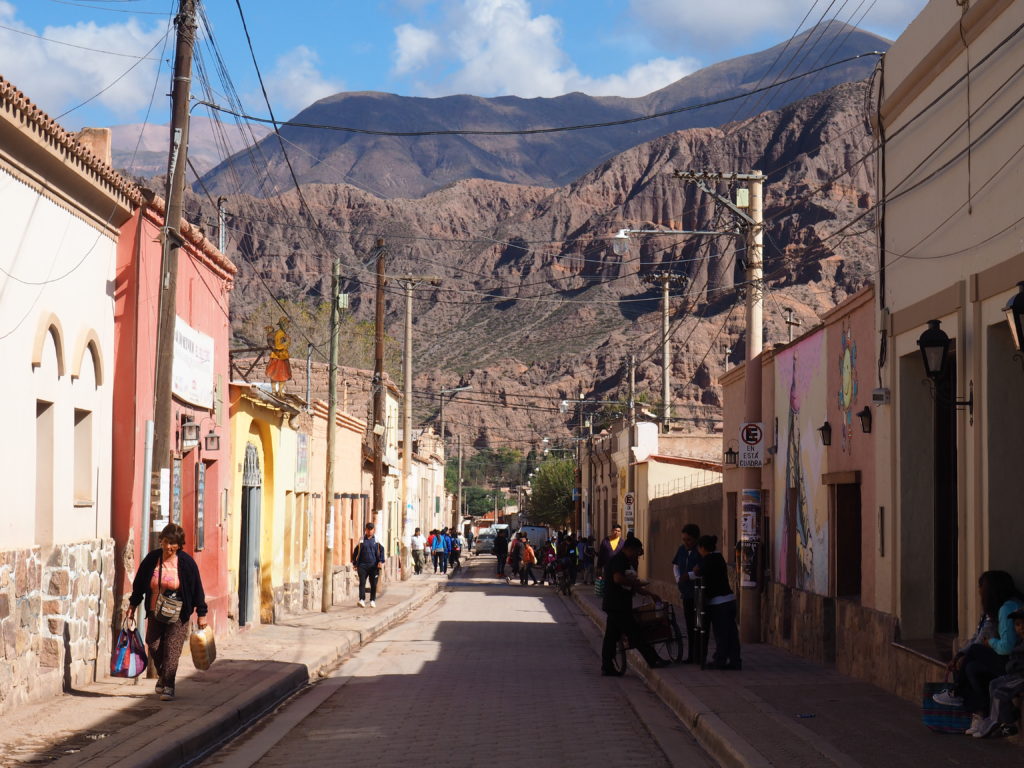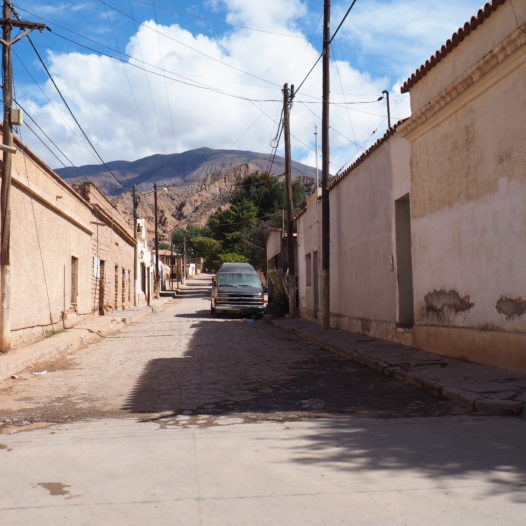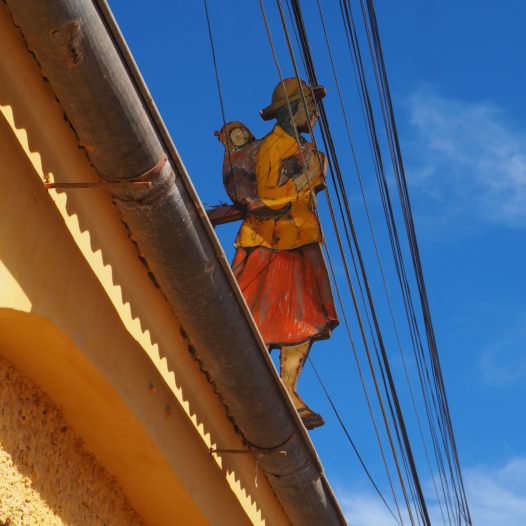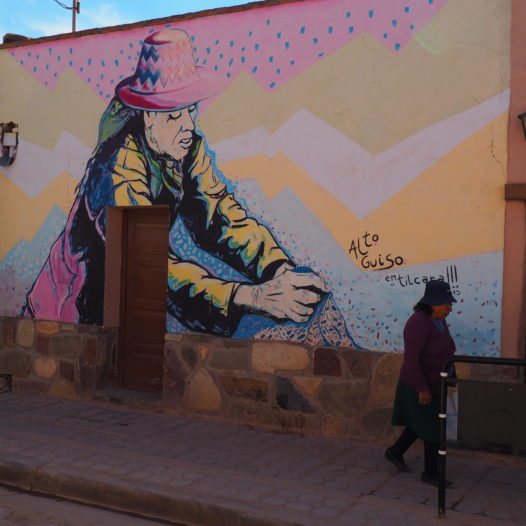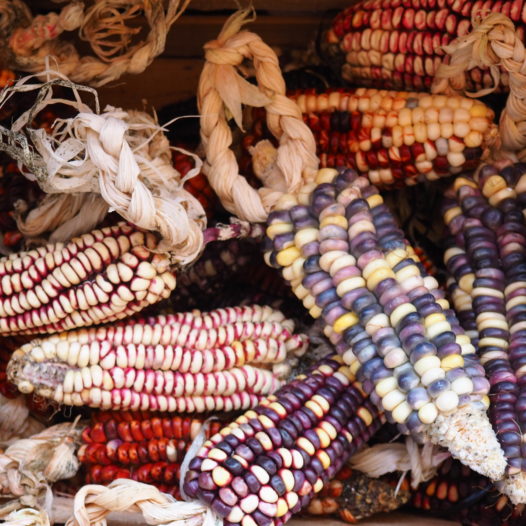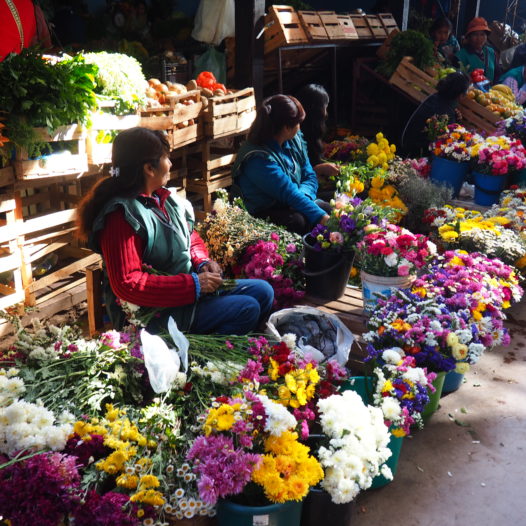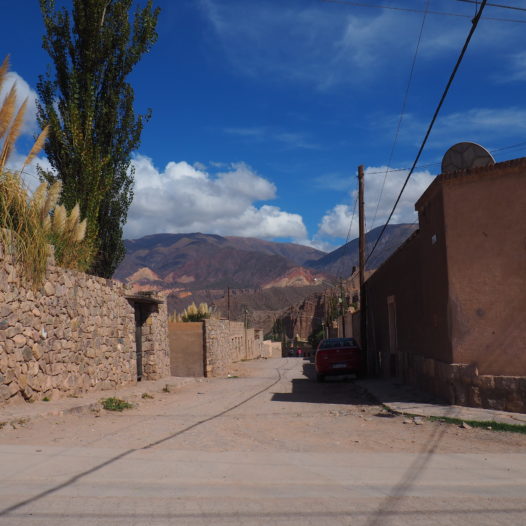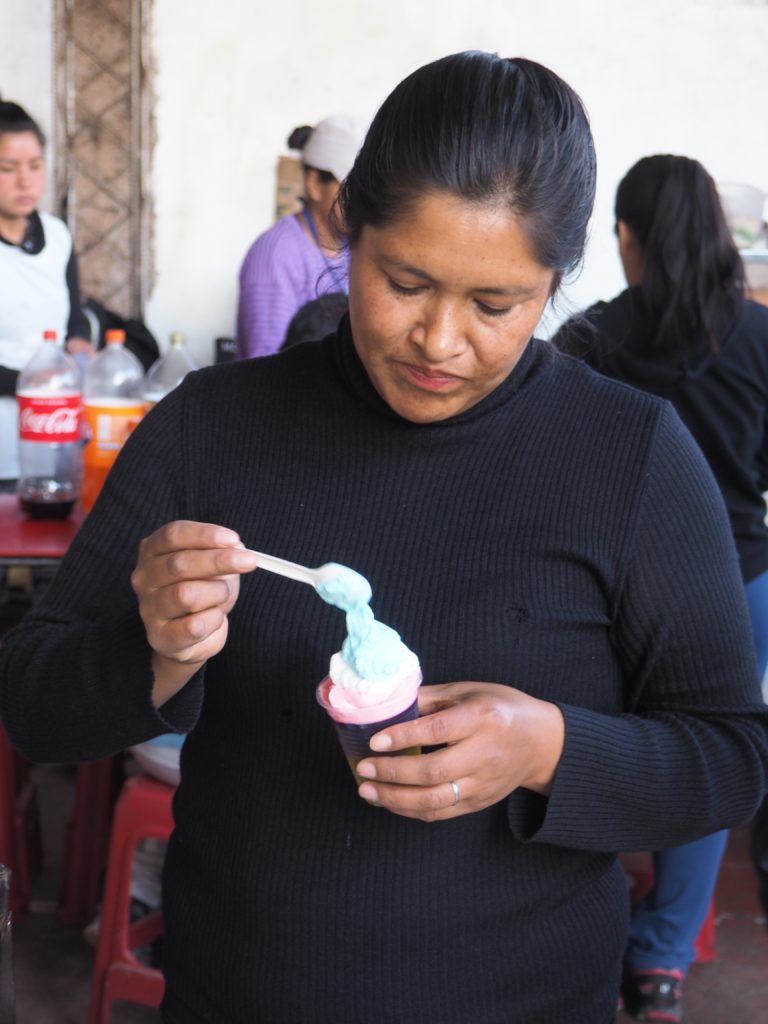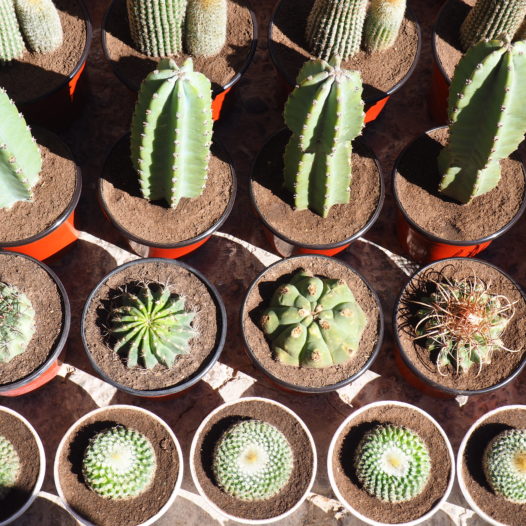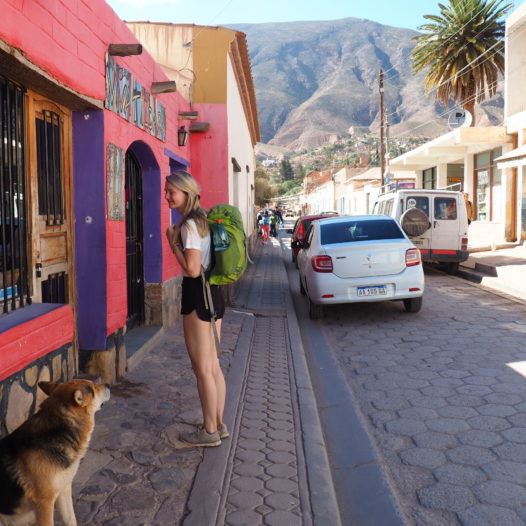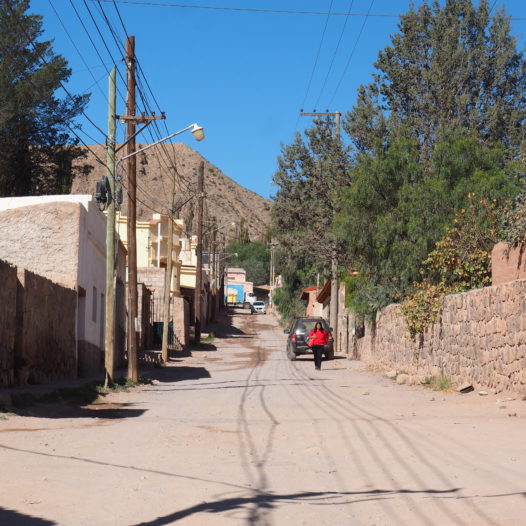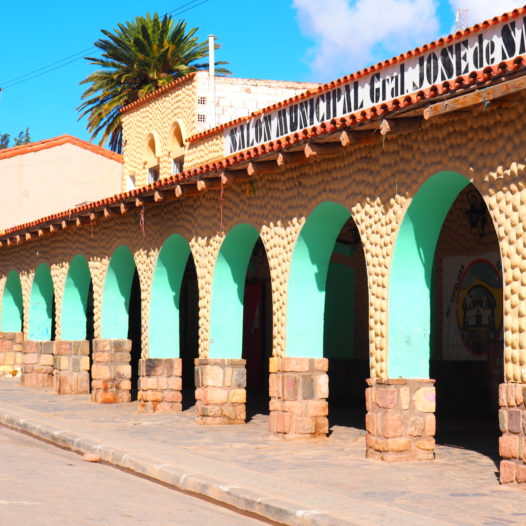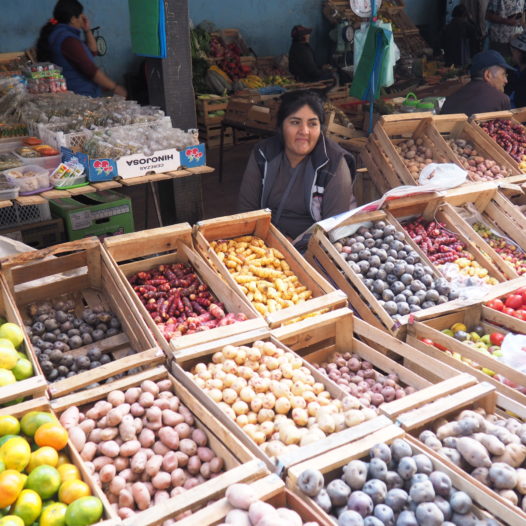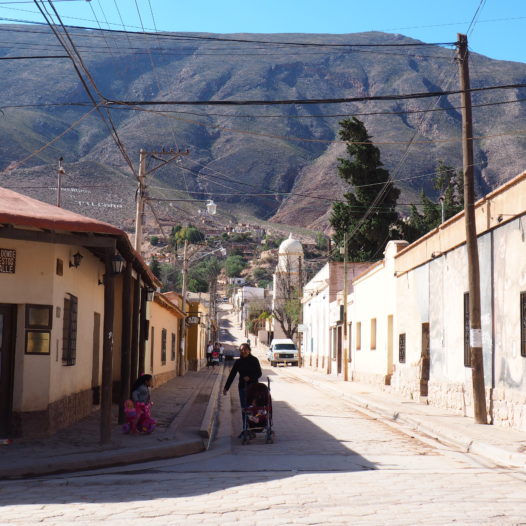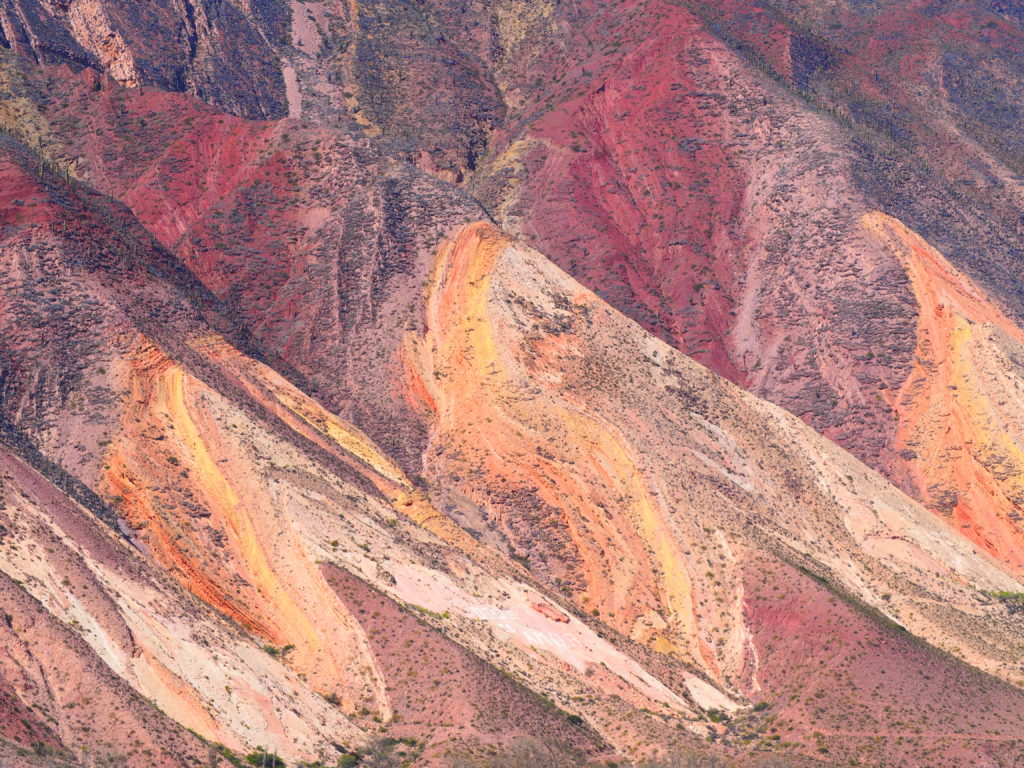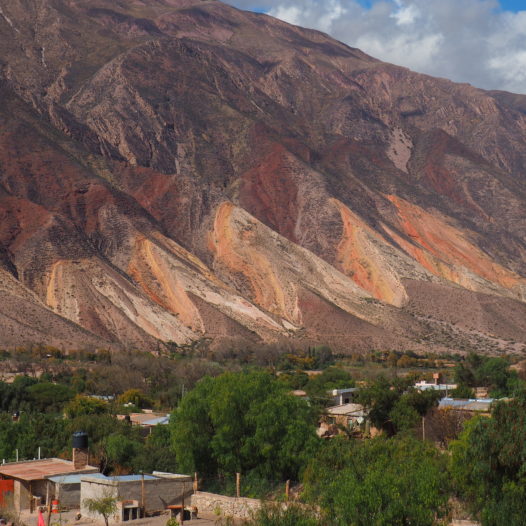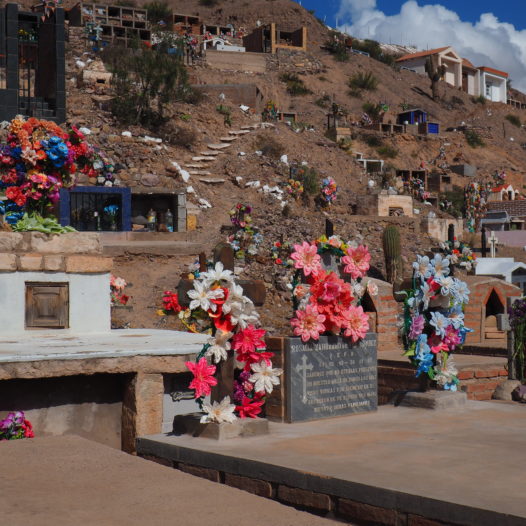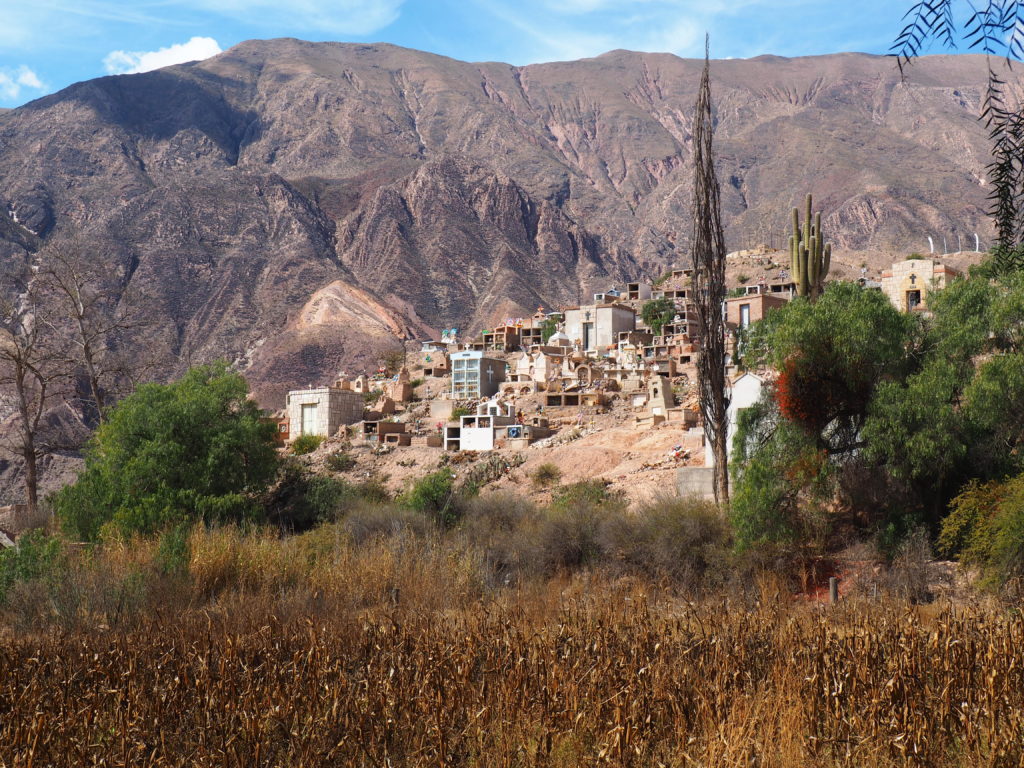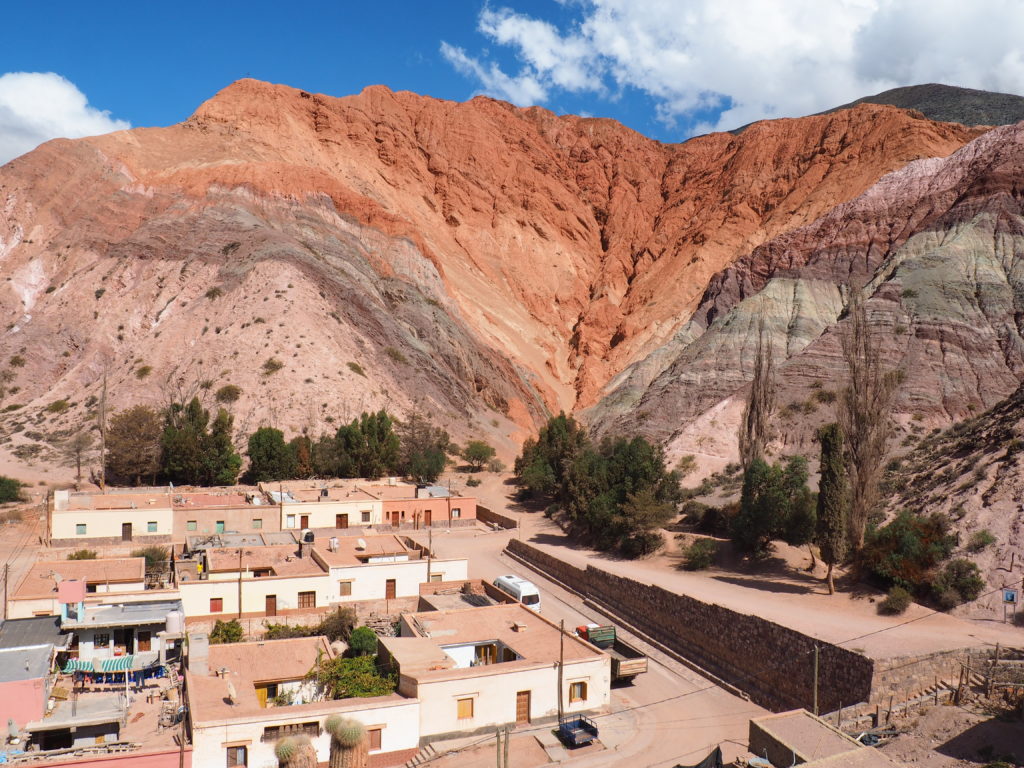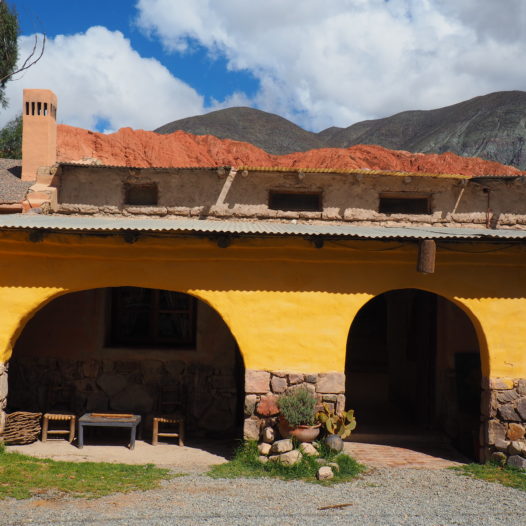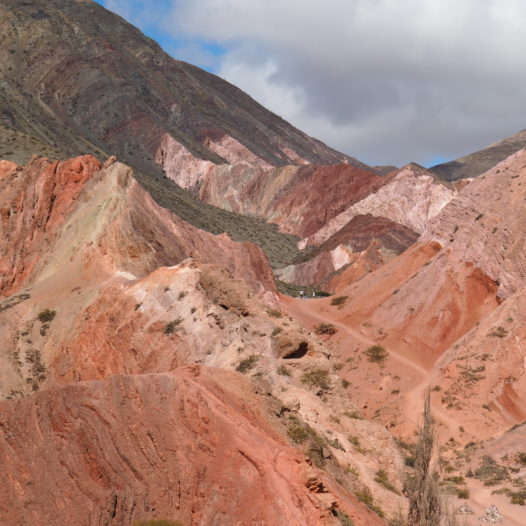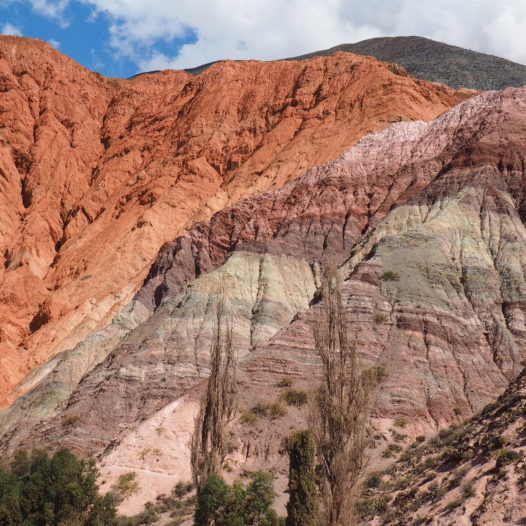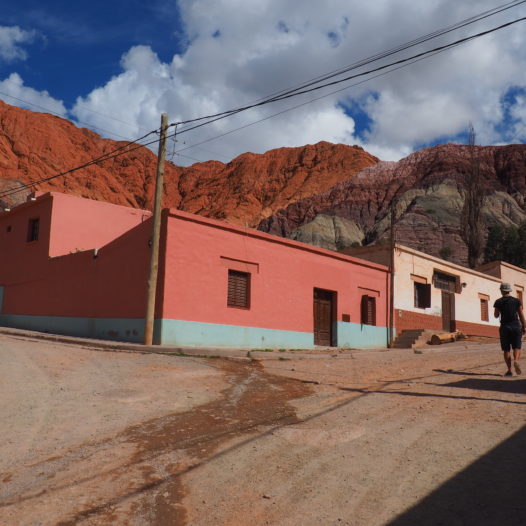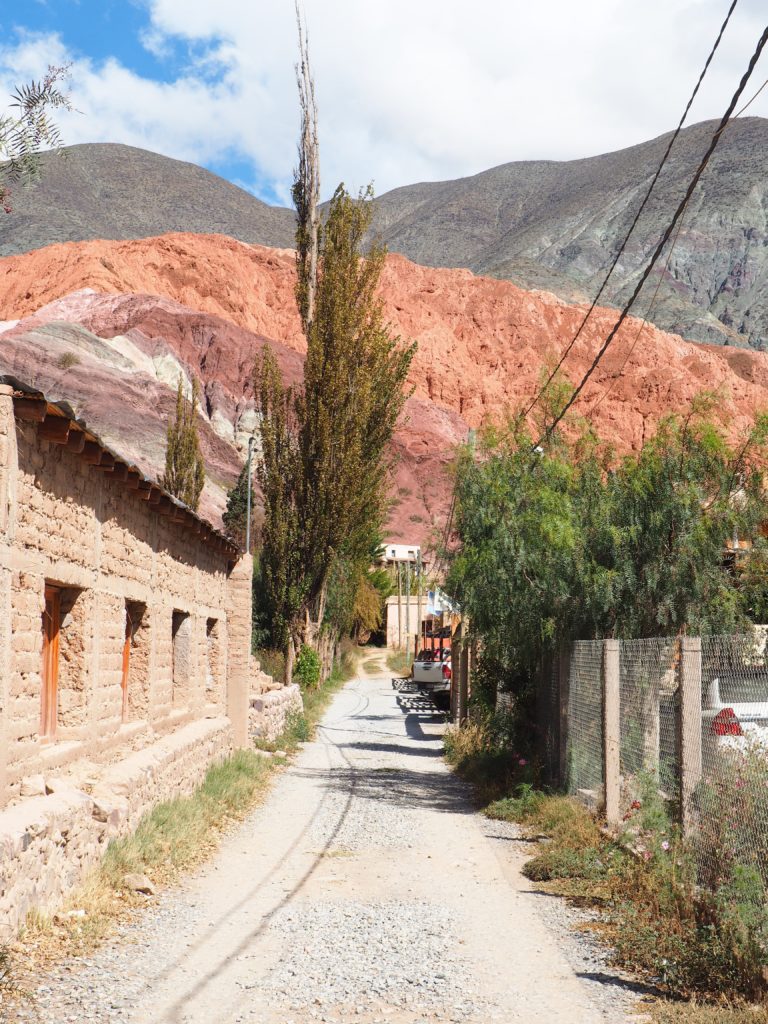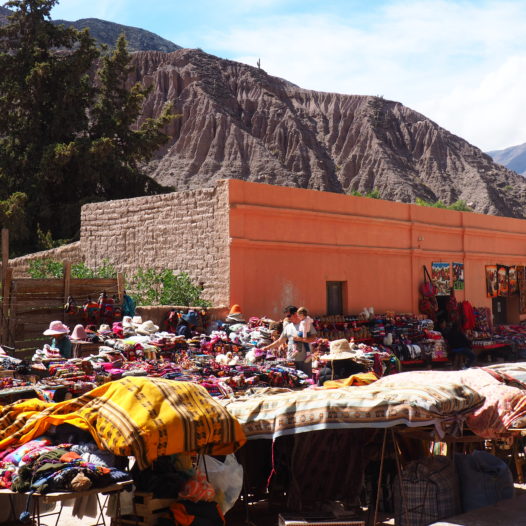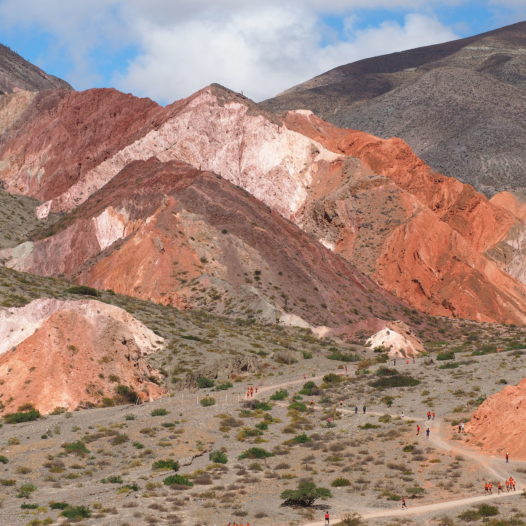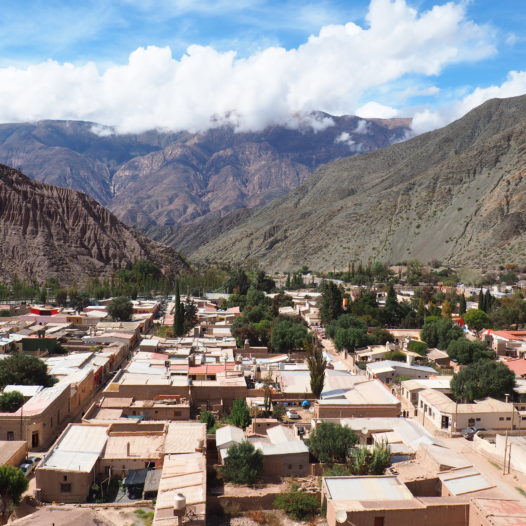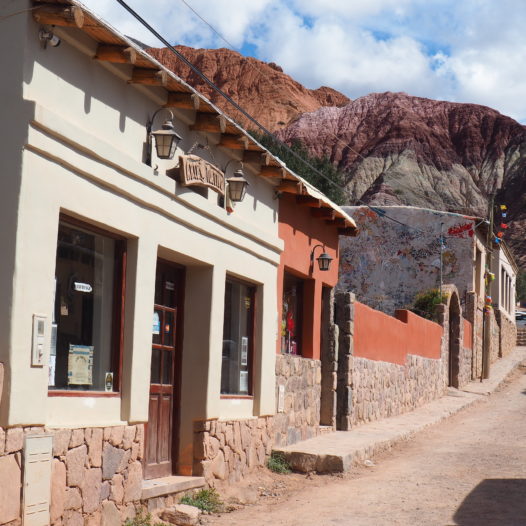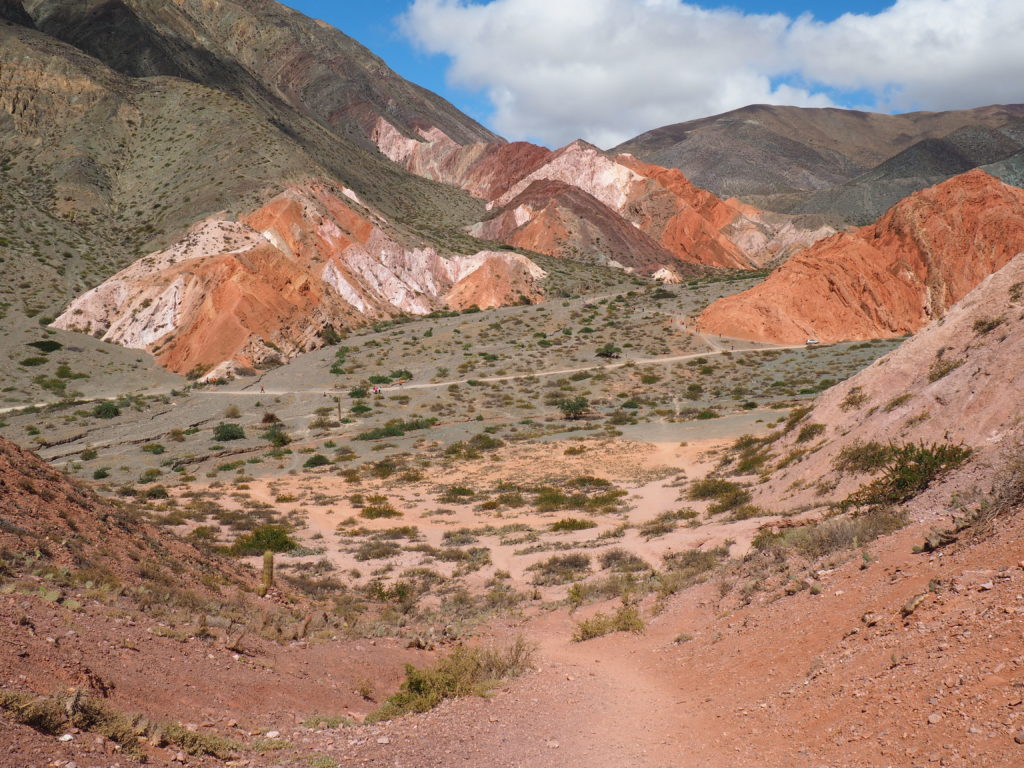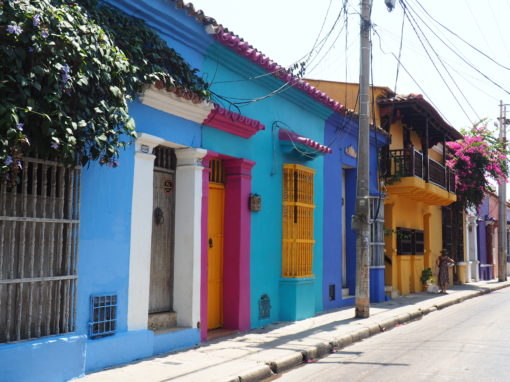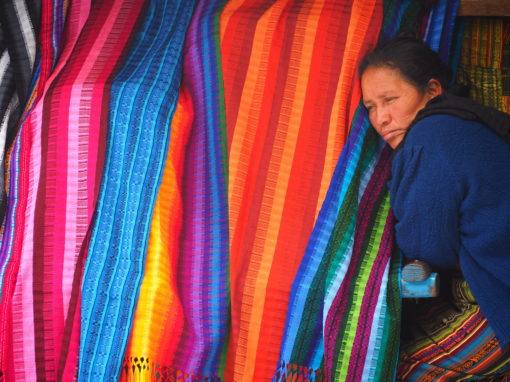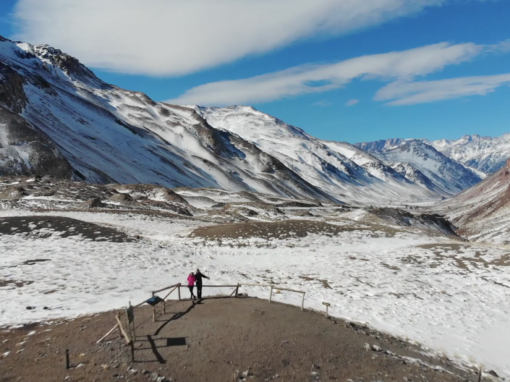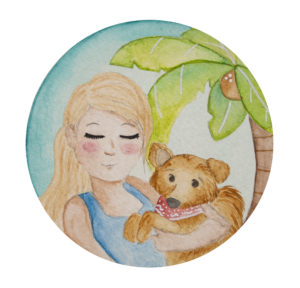Cruising the northern area has been a personal favourite so far in Argentina. At the foothills of the Andes in the province of Jujuy, nearby the deserts of Chile and Bolivia and far away from the green pampas, it feels like a bunch of artists has been colouring the area of Quebrada de Humahuaca with a non-stop going on effort throughout the ages.
Every mountain, every hill and every rock is painted in bright red, yellow, purples and green – sometimes all of them together striped side by side. On top of that, the cacti are never far away, gracing the barren 96 mile / 154 km valley with that wild wild west feeling. All in all it seems fair that UNESCO declared the Quebrada de Humahuaca a World Heritage Site in 2013.
Although it seems difficult to live in the dry area, the first traces of settlement date back to 10.000 years ago. Nowadays you can still find a couple of tiny villages along the road. They all ooze a different vibe, yet are united by their gorgeous backdrop and folklore.
If you visit the north of Argentina, you definitely shouldn’t skimp on this area in my opinion. What you’ll find in there? Have a look at this photo journal of our road trip through the five villages of Humahuaca, Uquía, Tilcara, Maimara and Purmamarca!
Humahuaca
This most northern, biggest (with 11500 inhabitant) and highest in altitude (3000 m / 9840 ft) of them all is meant for wandering around. Climb the stairs from the central park that lead to the Monument of Independence for a great view over the area, watch the colours of the Cerro de los 14 Colores, chill out on the square in front of the Iglesia de la Candelaria, have a drink at the cozy patio of La Puerta Verde, enjoy the cobblestone streets at night and eat a tortilla rellena!
That last thing mentioned is a must as Humahuaca had the best tortilla rellenas I’ve eaten during this trip. The guy who makes them is located of the corner of Cordoba x Av. Basilio Alvarez – near the bus station. For some kind of reason they only make these kind of tortillas in the north and at this corner they are filled with cheese, ham, tomato and herbs (35 ARS per piece). Watch it though; cause the cheese will be dripping once you’ve taken a bit out of it!
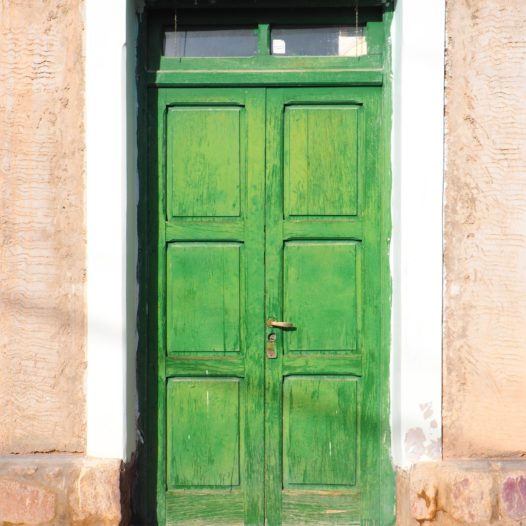
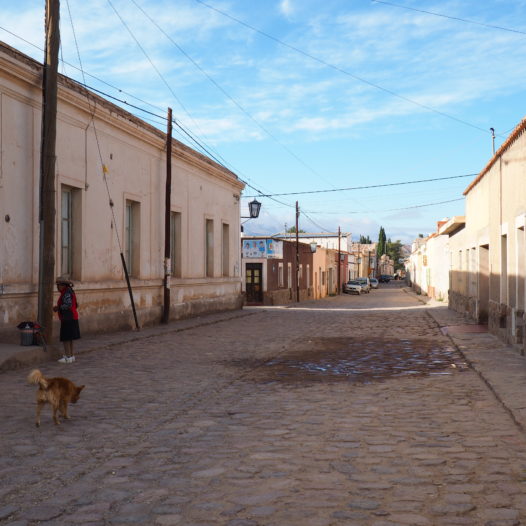
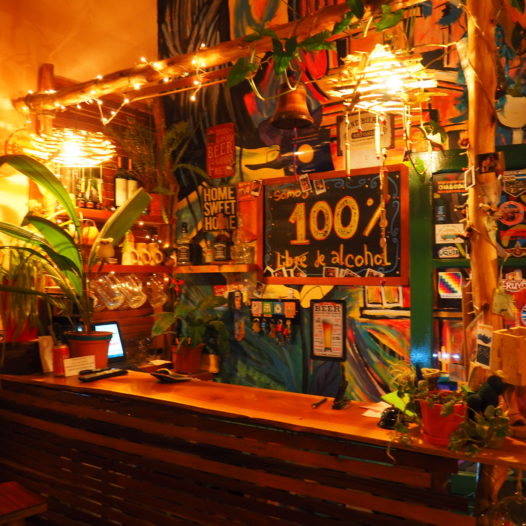
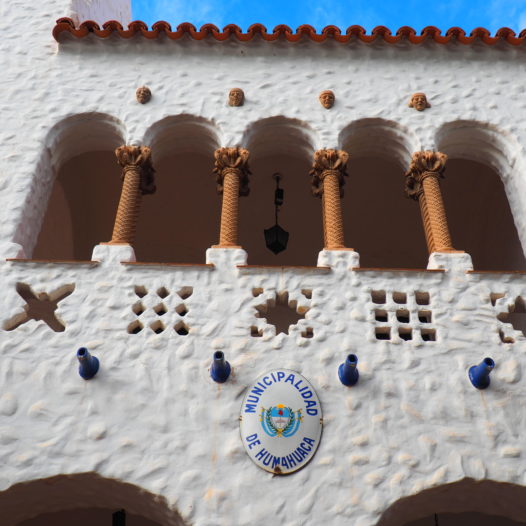
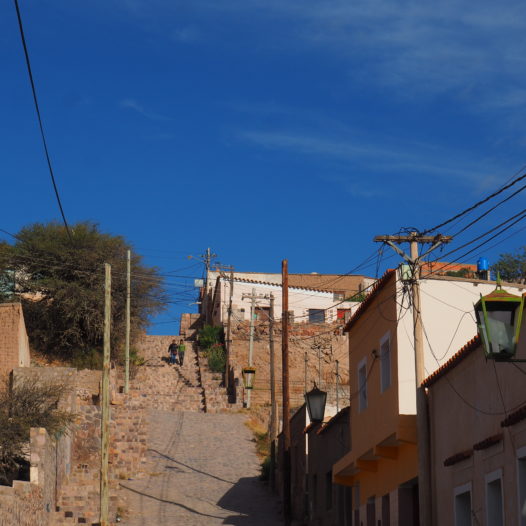
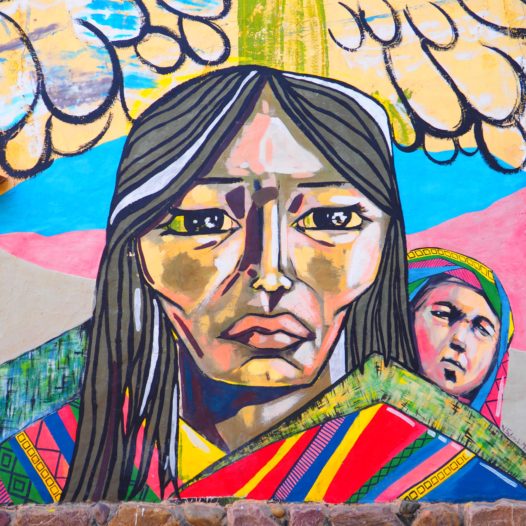
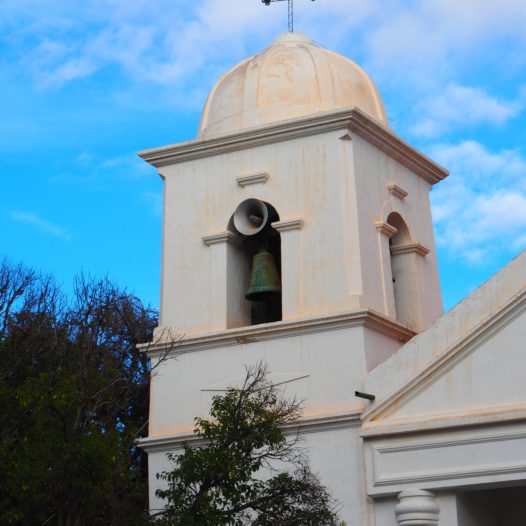
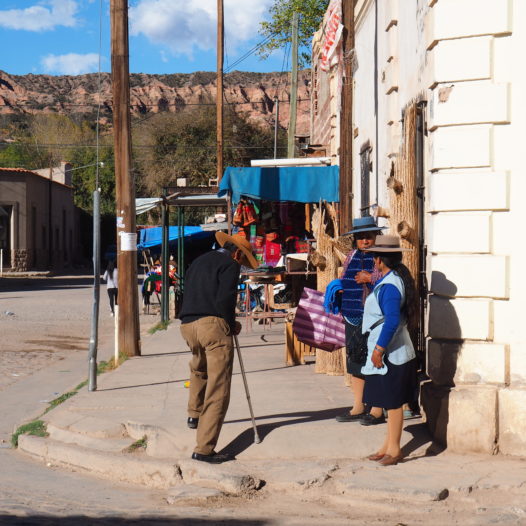
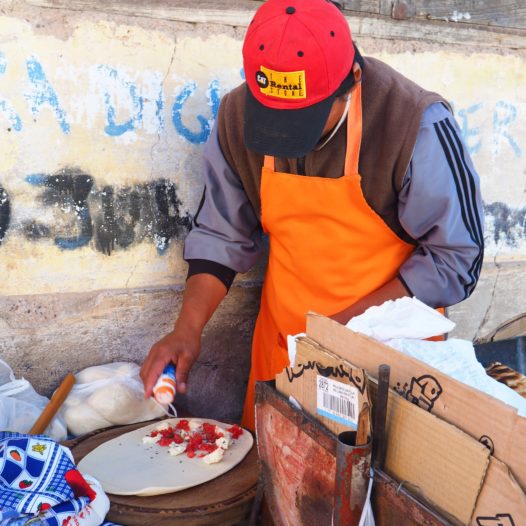
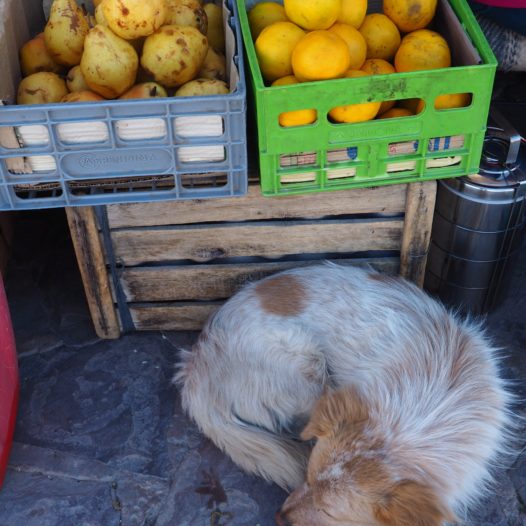
Uquía
The centrepiece of this tiny village is its immaculate white church. On the inside you can see paintings made by ‘Indians of the Cusco School’. Apart from that view, there’s isn’t a lot to do in town.
A road on the left side of the church leads all the way (3 km) along the cemetery to the colourful quebrada behind town. You can drive there, but you’ll do better justice to the solemn environment by hiking it up.
Tilcara
Of all the villages, this one felt the most liveliest of all, probably because of the market throughout town. The main square offers a more touristy one – with lots of clothes and candy, but next to it you can also find the regular market. Make sure to visit this one too; as you can also find a great almuerzo (lunch) over there for sure. I had one of my best empanadas in this place.
Tilcara is named after the Tilcara people. They already lived in the area some nine centuries ago and built a fortress in here. Excavations of that building are presented in the archaeological museum in town, in case you want to learn more about their culture. You can visit the site itself too; and it’s not just graves and stones you find in here – it also stars a lovely high-altitude botanical garden!
Maimara
One of the more quiet places in the area. The people that decided to settle in this area where smart; as the town is situated at the foot of one of the most beautiful hills in the quebrada. The name of it says it all: La Paleta del Pintor – the painter’s palette. Just have a look below and you might understand that it felt kind of unreal looking at the backdrop of this village.
The best spot to gaze at the colours of the palette is right at the cemetery hill up north in town. This might sound odd, but it’s a peaceful place and as everywhere in Latin America, people like to keep in touch with the deceased beloved ones, decorating the graves with many flowers and presents.
Purmamarca
All the way in the south at the end of the quebrada, this village is a small detour to the west on the highway, but totally worth it. The Cerro de los Siete Colores (Hill of Seven Colours) is dominating the view on the south, whereas the village is aligned by a river on the north. Perhaps because of this the setting of the town is the most picturesque in the area. Although you can gaze at the mountains forever, don’t forget to visit the main square for your daily dose of touristy ware.
